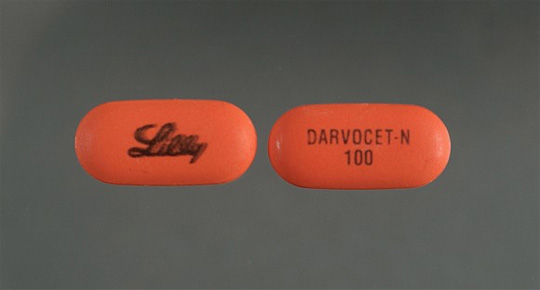Darvon Darvocet Propoxyphene
Practice Areas
A group seeking a Federal ban on the sale of Darvon and related painkillers containing the ingredient propoxyphene claims that such drugs are linked to over 2,110 deaths between 1981 and 1999.
The United Kingdom appears to be in agreement with this claim since it has instituted a phase-out of the drug and will eventually ban the drug.
Thus far experts have pointed to propoxyphene, the main active ingredient in Davocet, as the reason why such pain killers are dangerous. Propoxyphene is used to relieve mild to moderate pain and is prescribed in the following forms:
- Darvon and Darvon-N (propoxyphene only)
- Darvon with A.S.A., Darvon-N with A.S.A. (with aspirin)
- Darvocet, Darvocet-N, Wygesic (acetaminophen)
- Darvon Compound, Darvon Compound-65 (with aspirin and caffeine)
It is important to note that the latter version or the N-form of propoxyphene is absorbed by the body at a slower rate and has a longer duration of action, than the first or H-form of propoxyphene. Most theories regarding why Darvocet is dangerous implicates its slow absorption rate characteristic.

Dr. Sidney Wolfe the director of the petitioning group says the main active ingredient in the drugs, propoxyphene, is a relatively weak painkiller and poses an unacceptable toxic risk to the millions of patients prescribed it each year. While Dr. Carolyn Sachs of the University of California, Los Angeles stated, propoxyphene provides minimal if any additional analgesia to acetaminophen alone and is associated with significant adverse effects, it cannot be recommended for routine use, in her American Family Physician article on March 2005.
Jim Parker of the Do It Now Foundation, offers another theory as to why some people die when using darvocet. Mr. Parker in his July 2000 article attributes the problem to the drug’s ineffectiveness. The drug is often slow in providing pain relief to people using it. Consequently people take a double-dose to speed up the process. However, unbeknownst to most takers there is a small gap between a therapeutic dose and a lethal overdose. For example four times the standard dose of the drug can trigger slowing of breathing and heart rate. While six times the therapeutic dose can cause seizures and symptoms of psychosis. Mr. Parker also attributes a large portion of fault to people mixing propoxyphene with alcohol or other depressants.
FREE Initial Consultation!
Testimonials
This firm did a fantastic job handling my personal injury case. They kept me informed every step of the way with what was happening with my case and always answered any of my questions. I would highly recommend this firm. Great job
- Shateeka Spinks
I am really glad I worked with Abboud law firm. They were very helpful and accommodating. Everyone was very friendly and genuinely had my best interests at heart. I would recommend them to anyone.
- Ameneh Alhaidari
Abboud law firm took amazing care of me after my accident and was able to settle my claim wonderfully. They work very well with me and everyone involved. I would highly recommend using Abboud Law.
- Apolla Speck
Chris has been fantastic throughout this process after my accident and his staff has always been friendly and helpful. He managed to get me 3x what I expected. No complaints here. Definitely recommend.
- Jesse Charles
I had a very nice experience with Abboud!! They were very patient and understanding about my situation and kept me informed with what was going on with my settlement. Would serenity recommend
- Blake Lucey


